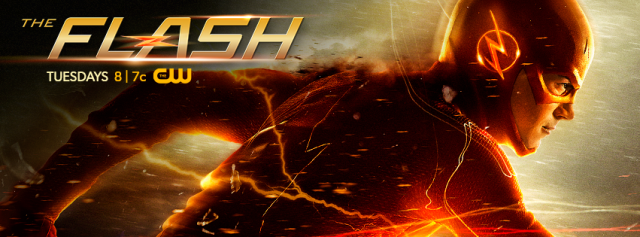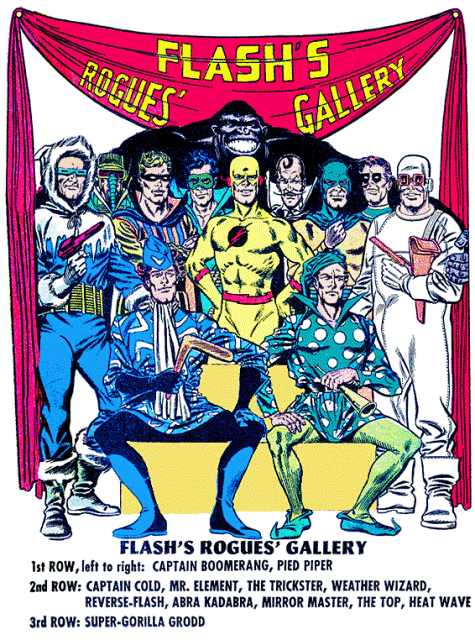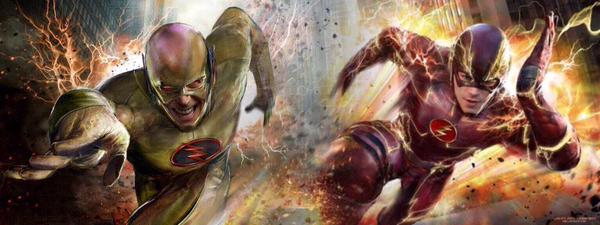Every time Grant Gustin says, “My name is Barry Allen and I’m the fastest man alive,” I get chills. I get goosebumps when I hear the opening voiceover, stirring string music pulsing in the background and the iconic shot of the Flash rescuing a bicycler being hit by a car. CW’s The Flash hits the bullseye for how a superhero television show should be made.
The Flash has received positive praise from both critics and the public. It gets consistent ratings, enough to get renewed by the CW for a second season. The show is smartly made, acknowledging both its television and comic-book roots, while not being afraid to take brave and bold risks in its first season.
This isn’t the Flash’s first run at the small screen. In 1990, the Flash, starring John Wesley Shipp, debuted on CBS. The show came in on the heels of the immensely successful Batman motion picture of 1989. It borrowed the feel and to a degree, the music of the Batman film — Danny Elfman composed both Batman score and Flash theme. However, its big budget and low ratings against TV giants The Simpsons and The Cosby Show couldn’t save the Scarlet Speedster from cancellation after only one season.
Since 1991 there have been a few stand-out live-action superhero television shows, including Lois & Clark: The New Adventures of Superman, Smallville, Arrow, and Agents of S.H.I.E.L.D. This season saw the addition of Gotham, Constantine, Powers and Daredevil. Next season debuts Supergirl, A.K.A. Jessica Jones, Power Man, Iron Fist and The Defenders. The current Flash show comes at just the right time, in a deluge of live-action superhero programming. The CW has strategically reserved some of the ever-increasing superhero market share by introducing the Flash now. The show’s success is based in part from the acknowledgement of its superhero television and comic-book legacy.
The 2014 series is not the same continuity of the 1990 series, but they give a wink to the loyal fan by casting the former Flash, Shipp, as Henry Allen, father to Barry Allen. Mark Hamill reprises his role as the villainous Trickster. And 1990 S.T.A.R. Labs scientist Amanda Pays returns as a reimagined version of her character at Mercury Labs. The CW incorporates the classic series much like how J.J. Abrams rebooted the Star Trek franchise, incorporating the past without invalidating the original series.
Much like its Marvel cinematic counterpart, the Flash recognizes the need for a broader universe, even if it’s currently restricted to crossovers with Arrow in Starling City. Yet with every episode, the Flash manages to introduce a new character, either hero and/or villain, expanding the current CW/DC universe, Smallville excluded.
The Flash comics have a wealth of allies and baddies to rival that of any major well-known superhero. Whereas in film only one villain can effectively be introduced at a time, television has 22 opportunities per season to expand the roster. By the end of this first season of the Flash, there will be enough supervillains to round out the infamous Rogues. With the addition of heroes like Firestorm and the Atom, the CW is setting its heroes up to form a minor Justice League. The untitled superteam spin-off has been greenlit and will air in the Fall of 2015. The show has already cast time traveler Rip Hunter and Hawkgirl.
Just as they are ready to introduce dozens of heroes, villains and supporting characters, the storytellers behind the Flash aren’t afraid to take risks. They’re telling big stories and delivering large ideas quickly, pun intended. Once Barry gets his powers, he’s out facing a supervillain in episode one. We are also introduced to the iconic Flash villain, the Reverse-Flash, through the cliffhanger final scenes of each episode — expertly used in the most recent Marvel movies post credits. Not only do the teases slowly reveal Dr. Harrison Wells’ secret (and season one’s underlying story arc), it broadens the Flash world, both its history and its future. The show trusts its viewers will follow the complex time-travel plotline carefully paced throughout the season. And so far, it’s been done quite well.
There are future risks, both to the Flash and the production crew, to come. Already they’ve teased the coming of Gorilla Grodd, a hyper-intelligent, telepathic primate bent on world domination. He is also a CGI nightmare — both in complexity and expense. But like their hero, the production crew behind the Flash is up to the challenge.
In order to deliver great storytelling, there needs to be great actors. Grant Gustin and Tom Cavanagh’s portrayals of Barry Allen and Dr. Harrison Wells provide a strong foundation to this ensemble cast. Gustin is charming. He delivers his lines with such sincerity that you can’t not root for Barry throughout his relationship and superheroic exploits. Cavanagh as Wells is a devious genius, inspirational but can flip instantly into cunning and murderous. He is the perfect mentor to Allen, and the perfect hidden foil.
Every week I look forward to new episodes of the Flash. For the first season, the show delivers big, introducing new heroes and villains, while building upon the Reverse-Flash storyline. The show even has a superhero team spin-off in the works. If the CW continues down this track, the “Fastest Man Alive” will be running for a long time.
Side note that may only be of interest to me:
Clancy Brown plays General Wade Eiling, the morally lacking military leader who, along with Dr. Harrison Wells, conducts experiments on animals creating Grodd, a hyper-intelligent telepathic evil gorilla. Clancy Brown also plays Shape Ape on The Thrilling Adventure Hour’s comedic podcast, The Adventures of Captain Laserbeam. Shape Ape is a somewhat intelligent villainous ape, bent on stealing things relating to shapes. Brown kills as Shape Ape, a nod to Grodd. Grodd… well, see for yourself.


